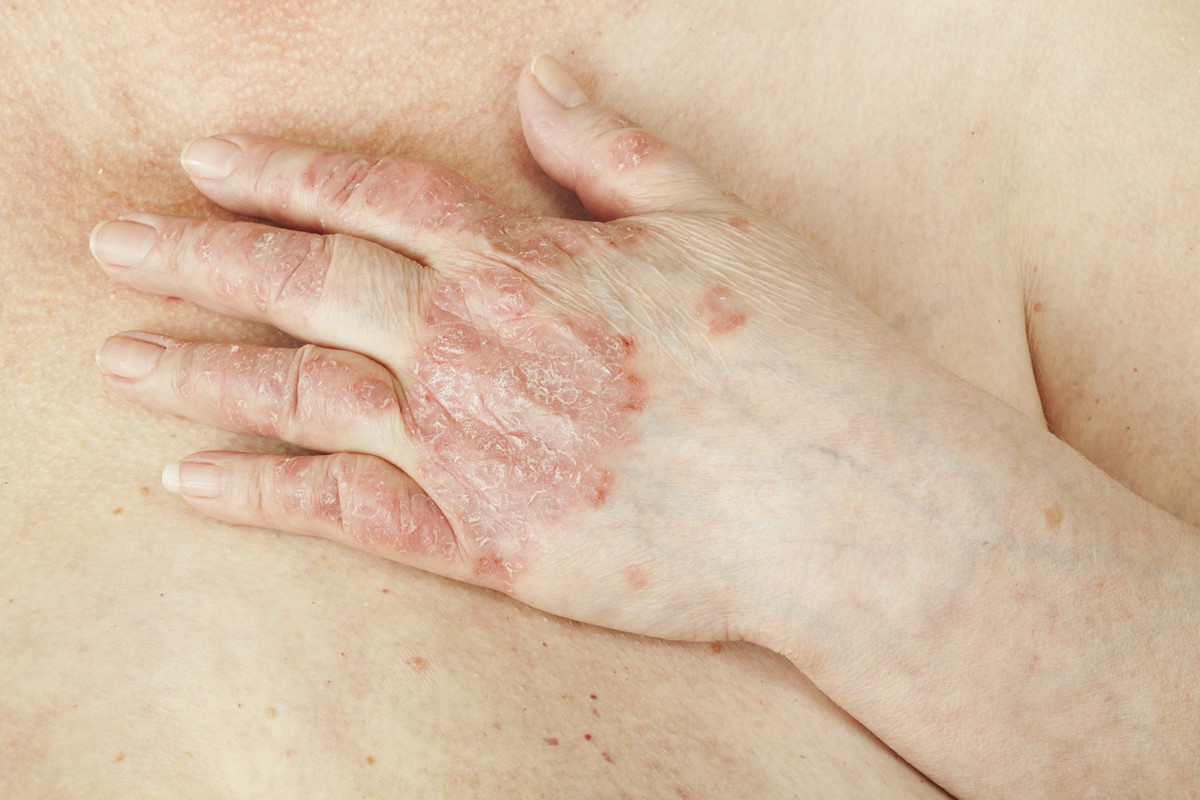
Psoriatic arthritis: how to recognize it?
It can sometimes be difficult to distinguish psoriatic arthritis from other conditions since the occurrence of joint pain is a common symptom of many rheumatologic conditions
Here’s how to recognize it.
What is psoriatic arthritis
Psoriatic arthritis is a chronic autoimmune inflammatory disease that affects the joints of people with psoriasis (usually 3 out of 10 people).
The immune system of these people views the normal components of the joint as a threat by triggering an inflammatory process directed primarily against the synovial membrane, connective tissue, and bone.
This inflammatory mechanism can severely damage the joint, going so far as to impair the function of the affected joint, especially if left untreated.
Psoriatic arthritis: the symptoms
Psoriatic arthritis can appear rather insidiously with nuanced symptomatology common to many other rheumatic diseases such as rheumatoid arthritis or gout.
Typically, it manifests as pain, swelling, redness, and heat in the joints especially of the hands, feet, knees, and ankles but inflammation can also affect the neck, shoulders, wrists, and hips.
In addition to affecting tendons, ligaments, synovial bursa, and joint nails, psoriatic arthritis may be accompanied by feelings of fatigue, exhaustion, and prolonged morning stiffness.
Why does psoriatic arthritis appear?
The causes are still not entirely clear.
Like psoriasis, psoriatic arthritis is multifactorial, due to a combination of:
- hereditary (genetic) factors that predispose to the disease
- environmental factors (emotional stress, infections) that can trigger it.
Thus, in a genetically predisposed person, certain environmental factors such as physical trauma, severe emotional stress, taking certain medications, or infection can trigger the disease.
In particular, streptococcal and staphylococcal bacterial infections and HIV infection appear to play a significant role in psoriatic arthritis.
How is the diagnosis made?
There are no specific tests to recognize psoriatic arthritis.
The diagnosis arises from a set of elements that the physician must evaluate, first and foremost the patient’s medical history, followed by observation of symptoms.
Because of this, each person will have symptoms that can vary greatly from others and therefore require individualized advice to better manage the disease over time.
Read Also:
Emergency Live Even More…Live: Download The New Free App Of Your Newspaper For IOS And Android
Skin Diseases: How To Treat Psoriasis?
Psoriasis, A Disease That Affects The Mind As Well As The Skin
Guttate Psoriasis: Causes And Symptoms
Psoriasis, An Ageless Skin Disease
Psoriasis: It Gets Worse In Winter, But It’s Not Just The Cold That’s To Blame
Childhood Psoriasis: What It Is, What The Symptoms Are And How To Treat It
Topical Treatments For Psoriasis: Recommended Over-The-Counter And Prescription Options
What Are The Different Types Of Psoriasis?
Phototherapy For The Treatment Of Psoriasis: What It Is And When It Is Needed
Arthrosis Of The Hand: How It Occurs And What To Do
Arthrosis: What It Is And How To Treat It
Arthrosis: What It Is And How To Treat It
Juvenile Idiopathic Arthritis: Study Of Oral Therapy With Tofacitinib By Gaslini Of Genoa
Rheumatic Diseases: Arthritis And Arthrosis, What Are The Differences?
Rheumatoid Arthritis: Symptoms, Diagnosis And Treatment
Joint Pain: Rheumatoid Arthritis Or Arthrosis?
The Barthel Index, An Indicator Of Autonomy
What Is Ankle Arthrosis? Causes, Risk Factors, Diagnosis And Treatment
Unicompartmental Prosthesis: The Answer To Gonarthrosis
Knee Arthrosis (Gonarthrosis): The Various Types Of ‘Customised’ Prosthesis
Symptoms, Diagnosis And Treatment Of Shoulder Arthrosis


